
Other names:
True cinnamon, Pure cinnamon, Sri Lankan cinnamon, Mexican Cinnamon, Sweet cinnamon
Cinnamon is a spice that has ancient origins and is popularly used as flavorings, as a condiment and in cooking. Cinnamon is also known to provide various medicinal benefits that include lowering of blood cholesterol, for diabetes. Cinnamon is obtained from the bark of the Cinnamon tree.
There are two popular kinds of Cinnamon, one is the “true Cinnamon” from the Cinnamon tree which is native in Sri Lanka (from the genus Cinnamomum verum) and the other is “Cassia” (Cinnamomum Cassia) which is being commercially cultivated in China, Indonesia, Vietnam and other Southeast Asian countries. It is widely accepted that Cinnamon from Sri Lanka is of better quality between the two.
Cinnamon is used in many culinary receipts and desserts, such as donuts, apple pie, cinnamon buns as well as candies, tea, hot cocoa, and liquors. Cinnamon is also used in thick soups, drinks and sweets. Cinnamon is popularly used in the United States as flavoring for cereals, bread-based dishes and fruits. In Mexico, cinnamon is used in the preparation of chocolates.
Other than for culinary purposes, oil obtained from the cinnamon bark is also popularly used in perfumery. Cinnamon oil is also used in dental and pharmaceutical products. Cinnamon leaf oil has been found to be effective in killing mosquito larvae. In some studies, Cinnamon leaf oil is being proposed for use as an insect repellent.
Because Cinnamon has ancient origins, a broad range of folkloric health remedies have been practiced through the years that can be found in various cultures. While not all of its claimed helath benefits are supported by science, a number of scientific studies that were done confirmed that there are indeed some medicinal benefits from Cinnamon.
Oral conditions. Cinnamon has traditionally been used to treat toothache and fight bad breath.
Health tonic. Cinnamon has been used to promote overall health and feeling of well being
Some of the folkloric applications of Cinnamon are as follows;
Memory Booster. Cinnamon can improve cognitive function as well as memory.
Blood Purification. Cinnamon helps in removing impurities from the blood, and is often recommended for pimples.
Promotes Healing. Cinnamon helps to stop bleeding, and facilitates the healing process.
Digestive Tonic. Cinnamon aids in digestion and is effective for indigestion, nausea, vomiting, upset stomach, diarrhea and flatulence. Cinnamon also relieves acidity and morning sickness.
Respiratory problems. Cinnamon helps in cold, flu, influenza, sore throat.
Menstruation. Cinnamon is effective in providing relief from menstrual cramp and discomfort..
In Indian Ayurvedic medicine, Cinnamon is used in the treatment of flatulence, piles, amenorrhea, diarrhea, toothache, amoebiasis, heart diseases, fever, cough, cold, headache and many others.
Anti-Oxidant. Cinnamon is widely believed to be high in anti-oxidants. Regular drinking of Cinnamon tea could be beneficial to oxidative stress related illness in humans,
Diuretic Effects. Cinnamon is diuretic in nature and helps in secretion and discharge of urine.
Aphrodisiac and is believed to arouse sexual desire. It is also believed that cinnamon aids in the secretion of breast milk.
The essential oils and some of the major compounds present in cinnamon, including (E)-cinnamaldehyde, eugenol, and linalool, were investigated in reference to peroxynitrite-induced nitration and lipid peroxidation. Eugenol and the essential oils were more effective than the other two compounds. In a comparative study among 26 spices, cinnamon showed the highest antioxidant activity, indicating that it can be applied as an antioxidant used in foods. Another study investigated the effectiveness of a mixture of spices on oxidative stress markers as well as the antioxidant activity in high fructose-fed insulin-resistant rats. The mixture, which consisted of 1 g/100 g cinnamon bark, showed a significant antioxidant activity compared to the fructose alone group. Volatile oils from C. zeylanicum showed significant biological activities.
A recent study reported that 2′-hydroxycinnamaldehyde isolated from C. cassiabark exhibited an inhibitory effect on the production of nitric oxide by inhibiting the activation of the nuclear factor kappa-light-chain-enhancer of activated B cells (NF-κB), indicating that this substance can potentially be used as an anti-inflammatory agent. The ethanolic extract of C. cassia showed significant anti-inflammatory effects by reducing the activation of Src/spleen-tyrosine-kinase- (Src/Syk-) mediated NF-κB. Various compounds contained in C. ramulusshowed anti-inflammatory effects by suppressing the expression of inducible nitric oxide synthesis (iNOS), cyclooxygenase-2 (COX-2), and nitric oxide (NO) production in the central nervous system (CNS). By this mechanism, C. ramuluscould be a potential source for the therapeutic treatment or prevention of inflammation-mediated neurodegenerative diseases [90]. Furthermore, the aqueous extract of cinnamon decreases the lipopolysaccharide-induced tumor necrosis factor-α levels in the serum.
Cinnamophilin is a novel thromboxane A2 receptor antagonist isolated from C. philippinensis. A study reported that cinnamophilin confers protection against ischemic damage in rat brains when administered at 80 mg/kg at different time intervals (2, 4, and 6 h) after insult. The effects were found to have a considerable effect (by 34–43%) on abridged brain infarction and further enhance neurobehavioral outcomes. Cinnamophilin also dramatically condenses the oxygen glucose deprivation-induced neuronal damage in organotypic hippocampal slices in experimental rats. A substance called procyanidin type-A trimer (trimer 1) isolated from cinnamon's water-soluble extract showed that trimer 1 may reduce cell swelling by controlling the movement of intracellular calcium [Ca2+]. Trimer 1 also considerably alleviates the oxygen glucose deprivation-induced diminishing effects on glutamate uptake. The protective effects of trimer 1 in attenuating the diminution in glutamate uptake are possibly arbitrated via their effects on the mitochondria.
Parkinson's disease (PD) is the second major widespread neurodegenerative disorder after Alzheimer's disease, with a prevalence of 2% in people 65 years and older. PD protein 7 (PARK7) is an autosomal recessive form of early-onset parkinsonism caused by alterations in the DJ-1 gene. Khasnavis and Pahan reported that sodium benzoate, a cinnamon metabolite, upregulates DJ-1 by modulating mevalonate metabolites. Cinnamon and its metabolite sodium benzoate also upregulate the neurotropic factors BDNF (brain-derived neurotropic factors) as well as neurotrophin-3 (NT-3) in the mouse central nervous system. PARK7 is one of the main neuroprotective proteins that protects cells from damage and from the further detrimental effects of oxidative stress; therefore, this protein may be an effective molecule that can be incorporated into the therapeutic intervention of Parkinson's disease.
A study reported that the aqueous extract of C. zeylanicum can reduce tau aggregation and filament formation, two of the main features of Alzheimer's disease. The extract can also encourage the complete fragmentation of recombinant tau filaments and cause the considerable modification of the morphology of paired helical filaments from Alzheimer's disease brain, indicating the potential of cinnamon in the treatment of Alzheimer's disease.
A substance from cinnamon has been isolated and coined as “insulin-potentiating factor” (IPF), while the antidiabetic effects of cinnamon bark have been shown in streptozotocin-induced diabetic rats. Several studies have also revealed that cinnamon extracts lower not only blood glucose but also cholesterol levels.
A study comparing the insulin-potentiating effects of many spices revealed that the aqueous extract of cinnamon was 20-fold higher than the other spices. Methylhydroxychalcone polymer (MHCP) is the purified polymer of hydroxychalcone with the ability to stimulate glucose oxidation. Anderson et al. isolated and characterized the polyphenol type-A polymers from cinnamon and found that these substances act as insulin-like molecules. Following this characterization, a new compound from hydroxycinnamic acid derivatives named naphthalenemethyl ester, which has blood glucose-lowering effects, has been identified, further confirming cinnamon's antidiabetic effects.
To date, several antimicrobial activities of cinnamon and its oils have been reported in various studies. For example, Matan et al. reported the effects of cinnamon oils on different bacterial (Pediococcus halophilus andStaphylococcus aureus), fungal (Aspergillus flavus, Mucor plumbeus, Penicillium roqueforti, and Eurotium sp.), and yeast species (Candida lipolytica, Pichia membranaefaciens, Debaryomyces hansenii, and Zygosaccharomyces rouxii], indicating that cinnamon is a natural antimicrobial agent.
The aqueous extract and the fraction of cinnamon (procyanidins) from HPLC inhibit vascular endothelial growth factor subtype 2 (VEGFR2) kinase activity, thereby inhibiting the angiogenesis involved in cancer. The results of the study revealed that cinnamon could potentially be used in cancer prevention. Cinnamaldehydes have been synthesized and tested as inhibitors against angiogenesis. Jeong et al. reported that CB403, a chemical that can be synthesized from 2′-hydroxycinnamaldehyde derived from cinnamaldehyde, can inhibit tumor growth. Overall, the antitumor and growth-inhibitory properties of CB403 in animal-based studies as well as in cell culture-based studies indicate the potential of cinnamon to be used as an anticancer agent.
Several studies have reported the protective effects of cinnamaldehyde on the cardiovascular system. Cinnamophilin is one of the important lignans isolated from C. philippinensis and has been confirmed to have thromboxane A2 (TXA2) receptor blocking activity in rats as well as in guinea pigs. Cinnamophilin acts as a potential thromboxane synthase inhibitor and TXA2 receptor antagonist and may be helpful when incorporated in the treatment of diseases involving TXA2 disorders such as platelet aggregation and cancers. Cinnamophilin mainly inhibits thromboxane receptor-mediated vascular smooth muscle cell proliferation and may have the potential for use in the prevention of vascular diseases and atherosclerosis.
The administration of cinnamon to mice positively affected the lipid profile, whereby the high density lipoprotein (HDL) cholesterol levels decreased, and plasma triglycerides were reduced. Another study by found a reduction in the total cholesterol, triglycerides, and low-density lipoproteins in rats administered Cinnamomum cassia powder (15%) for 35 days. Additionally, cinnamon oils reduced the cholesterol levels in broiler chickens. A study by Khan et al. reported that the administration of cinnamon at 1, 3, and 6 g doses per day caused a reduction in serum glucose, triglyceride, total cholesterol, and LDL cholesterol levels in humans.
Different types of phenolic and flavonoid compounds have been isolated from cinnamon. Epicatechin, catechin, and procyanidin B2, which are the phenolic compounds isolated from cinnamon, showed noteworthy and potentially inhibitory activities on the formation of AGEs. These antiglycation activities of the phenolic compounds not only are attributed to their antioxidant activities but also are associated with the entrapping capabilities of reactive carbonyl species, such as methylglyoxal (MGO), an intermediate reactive carbonyl of AGE formation. The inhibition of AGE formation by trapping the reactive carbonyl species could be a logical therapeutic approach to treat diabetes and its complications.
Source: Cinnamon: A Multifaceted Medicinal Plant Evid Based Complement Alternat Med. 2014; 2014: 642942.Tobacco Aid , Cinnamon is also being recommended to help curb the urge for tobacco The National Institute of Health recommends chewing cinnamon sticks when trying to quit the use of tobacco
Diabetes Type 2, Cinnamon could have some pharmacological effects in the treatment of type 2 diabetes mellitus and insulin resistance. Recent studies in phytochemistry of Chinese Cinnamon have indicated that cinnamtannin B1 isolated from C. Verum bears possible therapeutic effect on type 2 diabetes.
Infections. Cinnamon has anti fungal, antibacterial, antiviral and antiseptic properties, it is effective on external as well as internal infections. It helps in destroying germs in the gall bladder and bacteria in staph infections.
Cancer Prevention. In a study published by researchers at the U.S. Department of Agriculture in Maryland, cinnamon reduced the growth of leukemia and lymphoma cancer cells.
Colon Cancer , Pharmacological experiments suggest that the cinnamon derived dietary factor cinnamic aldehyde (cinnamaldehyde) activates the Nrf2-dependent antioxidant response in human epithelial colon cells and may therefore represent an experimental chemopreventive dietary factor targeting colorectal carcinogenesis.
Melanoma , The cinnamon derived dietary factor cinnamic aldehyde also exhibits anti-melanoma activity observed in cell culture and a mouse model of human melanoma
Food Preservation , The essential oil of cinnamon also has antimicrobial properties, which can aid in the preservation of certain foods when added to food, it inhibits bacterial growth and food spoilage, making it a natural food preservative.
The powdered cinnamon that we commonly use as a spice is typically Cassia cinnamon, and can be found in most grocery stores. It can also be purchased in stick form. Ceylon cinnamon is typically more expensive than Cassia cinnamon, and is therefore usually only available in specialty stores. While both types are known for their therapeutic effects, the Ceylon cinnamon is slightly sweeter and is therefore considered to be of higher quality.
Cinnamon herbal supplements are also available online via Amazon as listed: Cinnamon 1000 mg, there are other brands, be sure to select one from a reputable manufacturer and do follow the suggested dosage.
Cinnamon is used in many culinary receipts and desserts, such as donuts, apple pie, cinnamon buns as well as candies, tea, hot cocoa, and liquors. Cinnamon is also used in thick soups, drinks and sweets. Cinnamon is popularly used in the United States as flavoring for cereals, bread-based dishes and fruits. In Mexico, cinnamon is used in the preparation of chocolates.

A dash or pinch of Cinnamon powder can also be added to your favourite hot tea or coffee.
While half a teaspoon of Cinnamon powder can be added to your favourite drinks such as lemon juice and fruit juices.
Generally safe. Cinnamon is considered safe for most adults if taken in food amounts or as herbal medicine in recommended dosage.
Toxicity, Cinnamon especially from the variant Cassia has been found to contain a toxic compound known as Coumarin. High concentration of Coumarin has been found to cause damage to kidney and liver. Cinnamon powders that are bought in supermarkets are from C. Cassia thus moderate use is recommended.
Pregnancy: Large quantities of cinnamon should also be avoided during pregnancy due to the possibility of adverse effects on the uterus.
Breast feeding: While cinnamon has been traditionally used to promote milk production in nursing mothers, there are no sufficient studies that determine it side effects to very young babies. Herbal medication or consuming large amount during nursing discouraged.
Blood Anti Clotting Effect. Cinnamon has an anti-clotting effect on the blood, thus caution should be exercised when it is used in combination with other blood-thinning medications such as aspirin.
Interactions. Anyone that is currently taking medication for controlling blood sugar levels or blood thinners should consult their doctor before using cinnamon as a regular supplement.
Just like in any other herbal medicines, moderation of use is recommended. Prolonged use is discouraged.
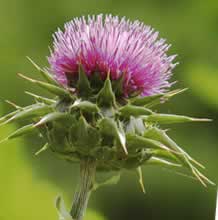 Silymarin extract still tops in liver protection
Silymarin extract still tops in liver protection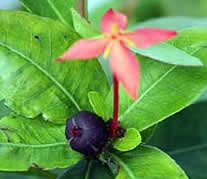 Santan Flower has wound healing properties
Santan Flower has wound healing properties 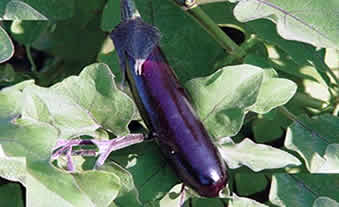 Antioxidant properties from Talong
Antioxidant properties from Talong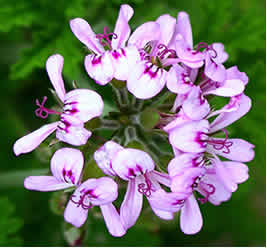 Malvarosa Plant found to have antioxidant properties
Malvarosa Plant found to have antioxidant properties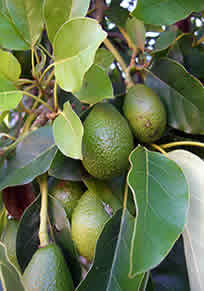 Anti-cancer properties of Avocado fruit
Anti-cancer properties of Avocado fruit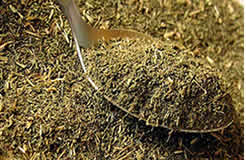 Stevia use can cause cancer, studies suggests
Stevia use can cause cancer, studies suggests